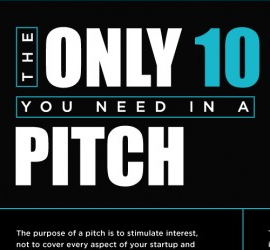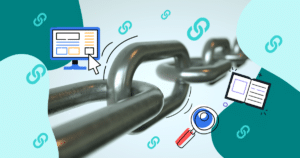As you likely know already, a buyer persona is a semi-fictional representation of your ideal customer that you create using existing data and new research.
A buyer persona represents a key customer segment of your business, and many companies will have several different personas, one for each unique customer segment of value.
However, many marketers aren’t sure how to do buyer persona research and get the right results.
In this article, we’ll help you understand why buyer personas matter, the different types of personas and research needed to learn about them, and the steps you can take in order to successfully learn how to do buyer persona research.
- Why are Buyer Personas Important to Businesses?
- Different Types of Buyer Personas
- Types of Buyer Persona Research
- How to Do Buyer Persona Research: 8 Steps
- Wrap Up
Why are Buyer Personas Important to Businesses?
While many marketers are aware of what a buyer persona is, they might be less sure about why they are so important to a business.
Buyer personas are foundational, meaning they are essential to the success of your business initiatives and strategies.
They allow you to understand your customers better and tailor your content, messaging, and services to meet the needs and concerns of your audiences.
Without a detailed understanding of your current customers and prospective audiences, you can really miss the mark when it comes to your sales and marketing strategies.
You need to gather a detailed portfolio of your customers in order to know their backgrounds, goals, ideals, and challenges.
Buyer Persona Example
Think, for example, that your company makes energy drinks and has a significant customer segment of athletes.
You don’t have a full persona, but you think that their biggest challenge is getting hydrated after playing a sport, so you market your product as an after-workout energy booster.
However, you were mistaken in the demographics of your audience, and they are older than you thought.
Rather than staying hydrated, their biggest challenge is getting the energy they need before a performance.
Your message doesn’t resonate with them, and instead of increasing sales in that segment, you start to lose them.
If you had a persona to start with, you could have marketed your drink as a pre-workout energy booster and addressed the real concerns your customers had rather than just guessing what their challenges were.
Different Types of Buyer Personas
There isn’t a set of clear customer profiles that can be filled out for every business, even if that would be easier.
Instead, each business is unique and will have a different set of personas.
Even between competitors, there will be differences in customers that need to be addressed rather than a standard list of personas that can be reused by multiple organizations.
Rather than looking for a profile that you can use or a list of different personas that your company needs, you can instead focus your time and energy on defining the different segments in your own business.
Then you can use a template to help you simplify the creation process rather than try to shortcut the buyer persona research process.
In order to know how to do buyer persona research, you first need to know your own business.
Categorize your audience segments into categories that work for your business, like job positions or company roles, and work from there in conducting your research.
Types of Buyer Persona Research
There are different types of research that you can do in order to gather the information needed to fill out a buyer persona profile.
You’ll likely want to know how to do buyer persona research in all of these categories, as the processes and approaches in each area are important for well-rounded profiles that address all areas of an audience segment.
Background Research
Background research involves looking at information that already exists in your industry.
This can come from things like:
- Industry reports
- Competitors
- Social media research
Background research is a great way to start your buyer persona research approach, and it involves creating a baseline of information with data that is already accessible and existing.
Just remember: this research is often very surface level, and not specified to your own unique audiences.
Qualitative Research
Qualitative research is research that is gained observationally. It explores data that is collected that is non-numerical.
That means that it is information collected through methods like customer interviews, focus groups, questionnaires and surveys, and direct observations.
Rather than collecting hard data and numbers, you instead gather data through observation or communication.
A great example of qualitative research is customer interviews. You can directly ask your current customers for information in order to gather details about their goals and challenges.
This allows you to create customer profiles and buyer personas based on real customer information.
You can then use that information to build out profiles based on real answers and customers rather than your assumptions of them.
Quantitative Research
Qualitative research is research that uses numerical data.
By collecting hard numbers and data on your customers, you can create insights into their behaviors, actions, and goals.
You can use this research to impact your decisions and understand more about the actions your customers take and back it up with numbers.
Because quantitative research is supported by numerical data, it is easy to verify and use to create buyer personas.
You can use your CRM and other marketing technology tools to help you gather quantitative data.
This is helpful if your customers don’t want to attend interviews or your qualitative data isn’t giving you enough insights to create a full buyer persona.
How to Do Buyer Persona Research: 8 Steps
Now that you understand the importance of buyer personas and the types of research methods you can use to gather information, let’s discuss the steps you need to take in order to do buyer persona research successfully.
1. Define Goals of Research
The first step in your buyer persona creation process is to define your goals.
Are you creating brand new personas? Do you have a new segment or market that has opened up that you need to create a profile for?
Or do you have old buyer personas that need to have new data added to them to make sure they are still accurate?
2. Find Interviewees for Researching Buyer Personas
The next step is to figure out which of your current customers will be the best for research purposes. You’ll want a wide variety of customers, not just your top buyers or newest acquisitions.
3. Recruiting Interviewees
Once you’ve determined who you want to interview, you’ll need to work on recruiting them.
You might need to offer an incentive like a gift card or a discount in order to compensate your interviewees for their time, especially if they are high-level executives.
4. Use Your Technology Data
Your technologies and platforms collect a large amount of data, most of which, unfortunately, goes unused.
Start collecting the data you need for qualitative research and determine which groups of customers fit into the data you collect in order to build out your personas.
5. Brainstorm Questions to Ask in Interviews
The next step is to brainstorm the questions you want to ask the customers in the interviews.
You’ll want a variety of questions that cover the areas you want to fill in your buyer personas. Examples of interview questions include:
- What is your role in your company?
- How is your job evaluated?
- What does a typical work day look like?
- What skills are needed to do your job?
- What are your career goals?
- What knowledge and tools do you use at work?
- Who are you accountable to?
- Who is accountable to you?
- What is your biggest challenge?
- Where do you get information?
- What would make your job easier?
6. Build Out Detailed Profiles
The next step is to start building out profiles. As you build out, take notice of any areas that could still use more information to complete.
Then you can schedule additional interviews or gather more data to complete the profile.
7. Distribute Personas to the Team
Buyer personas aren’t much use if your team doesn’t have them. Distribute your profiles to the teams and explain how your marketing will adapt to using them.
8. Constantly Revise Your Personas
Your customer segments are constantly shifting, and your profiles need to adjust with them. While you don’t need to update them daily, weekly, or even quarterly, you will want to revise them as needed to make sure your personas are accurate.
You may also be interested in these articles:
- Develop Buyer Personas Accurately By Avoiding These 7 Buyer Personas Mistakes
- Ditch These 9 Buyer Persona Myths and Succeed this year
- Perfect Your Marketing Campaign with Thorough Negative Buyer Personas
Wrap Up
A buyer persona is a key piece of foundational information needed to successfully create strategies that target your audiences and core customer base.
Without buyer personas, your company will have a hard time knowing how to attract the right leads and develop approaches that target the right customers needed in order to excel and grow.
Once you know how to do buyer persona research, you can create and edit your personas as needed.
If you aren’t sure about what a persona should be, then check out our blog on buyer persona examples!
There you’ll discover both B2B and B2C buyer persona examples to help guide your own persona creation process to get the best results.








